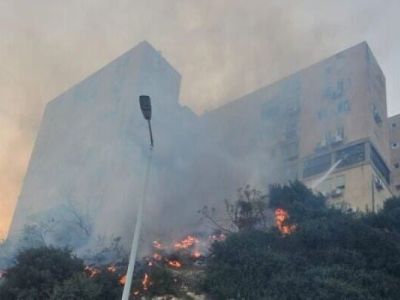As summer approaches, Iran is struggling through a third year of drought that is compounding the difficulties President Mohammad Khatami faces in reforming Iran, according to a report issued by Stratfor Strategic Forecasting on Tuesday.
Though re-elected in a landslide vote, Khatami faces many familiar challenges: a restless population, strong conservative opposition and a stagnating economy.
As if that wasn't enough, the weather is not cooperating, notes the analysis. The rainy season has come and gone, and Iran still faces a severe water shortage. The drought will spur anti-government protests in normally placid rural areas and increase the rate of migration to cities already teeming with unemployed people, the authors predicted.
The report says that much of the electorate still hoped Khatami would push democratic reforms through the government, but his hands are virtually tied by conservative institutions.
The normal level of frustration with the slow pace of reforms will combine with anger over the government's inability to mitigate the drought's effects, creating more distance and disenchantment between the government and people of Iran, says the report.
The Iranian government expects a water crisis in nearly half of the nation's 28 provinces this year. Spring rains were light and did not replenish the water supply, which is still recovering from last year's drought - the worst in 30 years. Harvests are expected to be anywhere from one-third to one-half lower than normal. The UN reported in December that 80 percent of drinking water wells were running dry.
Tehran estimates that last year's drought did about $3.5 billion to $4 billion in damage. Since the government spent $300 million on an aid package, drought costs wiped out about one-third of the windfall Iran received from high oil prices, says Stratfor.
This year’s expected protests will not be unprecedented. According to the report, last year's drought generated scattered protests and violence. About 4,000 demonstrators blocked a highway near Tehran in June 2000 to protest the government's failure to provide water, electricity and medical care to their district.
In July, at least three people were killed in a riot in Abadan while demanding clean drinking water. Two men were stabbed a few days later in a fight over drinking water in Qom, Iran's most revered religious center.
Similar troubles are expected this year, but they will be more widespread, the report predicts.
On June 14, Iran's official news agency (IRNA) reported that UNICEF would grant Iran $600,000 this year to help the country cope with the severe drought.
The aid, raised by developed countries, will be used to buy water tanks to be distributed to severely hit drought-stricken regions in five Iranian provinces, an official was quoted by the agency as saying.
A UN delegation had been touring Khorasan province for two days to estimate the impact of the drought in the region.
The mission was due also to travel to the southern provinces of Sistan Baluchestan, Kerman, Fars, Yazd, Hormuzgan and Bushehr.
UNICEF granted some $75,000 to the Islamic republic last year to buy water tanks for five provinces – Albawaba.com
© 2001 Al Bawaba (www.albawaba.com)









